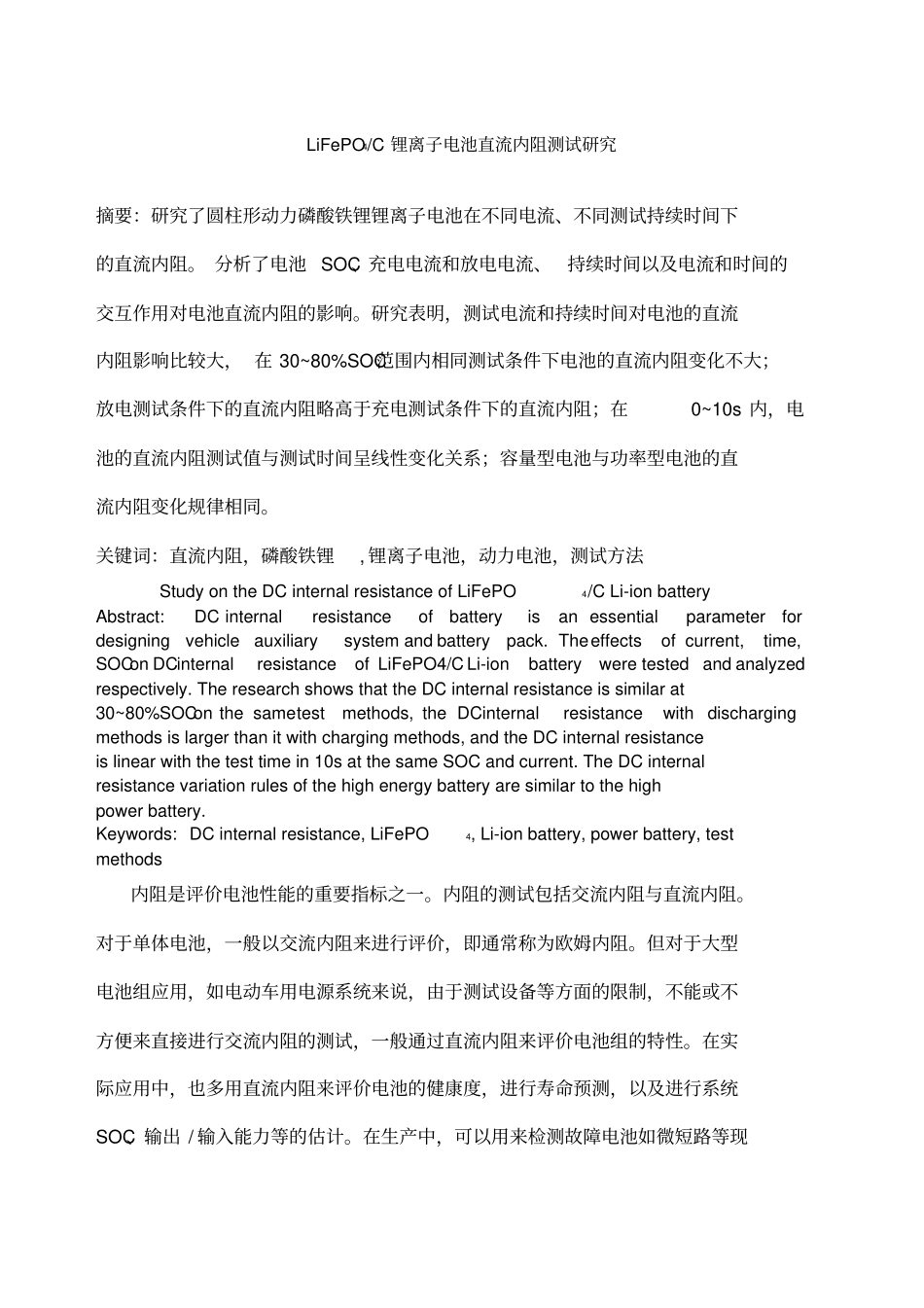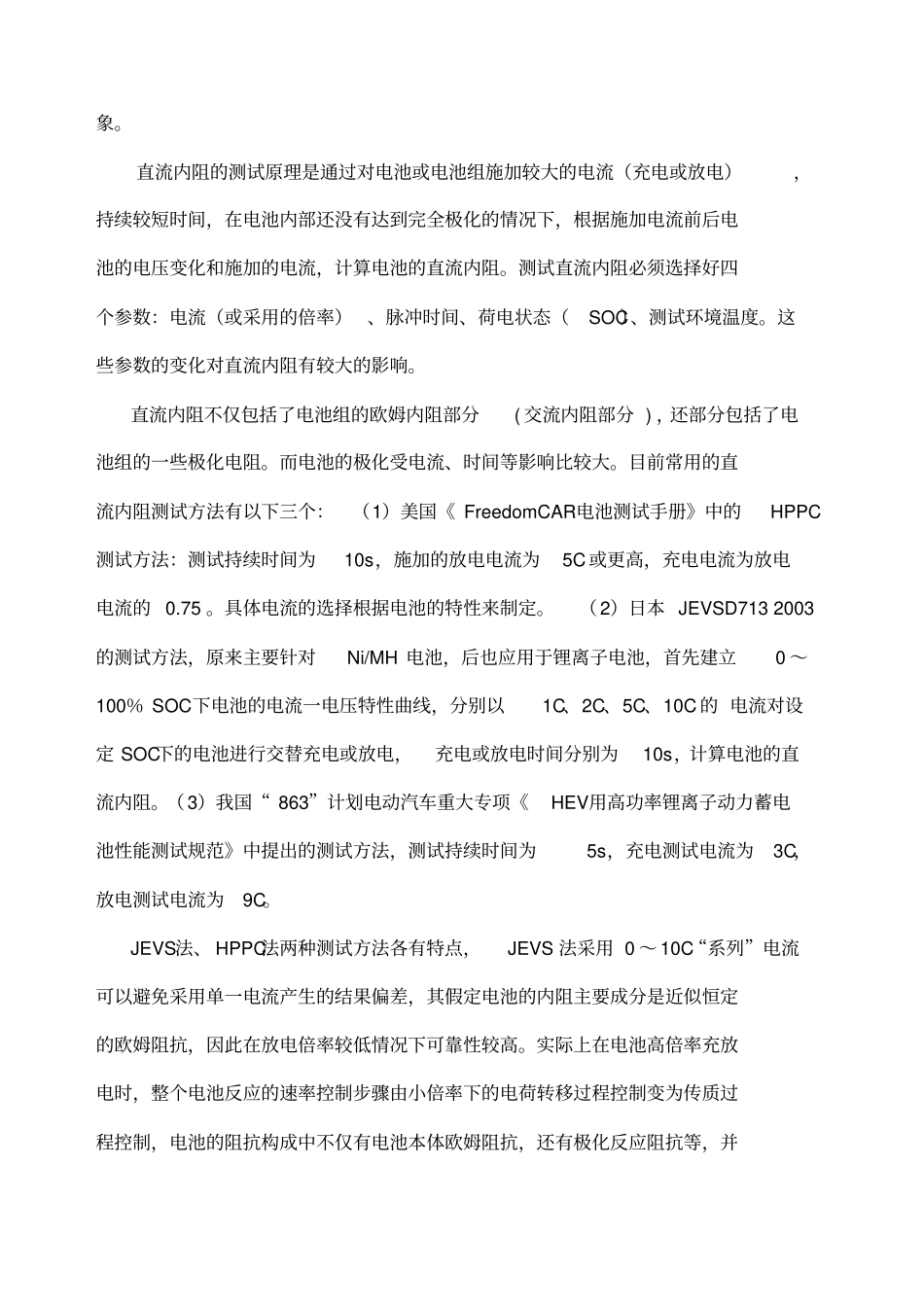LiFePO4/C 锂离子电池直流内阻测试研究摘要:研究了圆柱形动力磷酸铁锂锂离子电池在不同电流、不同测试持续时间下的直流内阻。 分析了电池 SOC、充电电流和放电电流、持续时间以及电流和时间的交互作用对电池直流内阻的影响。研究表明,测试电流和持续时间对电池的直流内阻影响比较大, 在 30~80%SOC范围内相同测试条件下电池的直流内阻变化不大;放电测试条件下的直流内阻略高于充电测试条件下的直流内阻;在0~10s 内,电池的直流内阻测试值与测试时间呈线性变化关系;容量型电池与功率型电池的直流内阻变化规律相同。关键词:直流内阻,磷酸铁锂, 锂离子电池,动力电池,测试方法Study on the DC internal resistance of LiFePO4/C Li-ion battery Abstract: DC internal resistance of battery is an essential parameter for designing vehicle auxiliary system and battery pack. The effects of current, time, SOC on DC internal resistance of LiFePO4/C Li-ion battery were tested and analyzed respectively. The research shows that the DC internal resistance is similar at 30~80% SOC on the same test methods, the DC internal resistance with discharging methods is larger than it with charging methods, and the DC internal resistance is linear with the test time in 10s at the same SOC and current. The DC internal resistance variation rules of the high energy battery are similar to the high power battery.Keywords: DC internal resistance, LiFePO4, Li-ion battery, power battery, test methods 内阻是评价电池性能的重要指标之一。内阻的测试包括交流内阻与直流内阻。对于单体电池,一般以交流内阻来进行评价,即通常称为欧姆内阻。但对于大型电池组应用,如电动车用电源系统来说,由于测试设备等方面的限制,不能或不方便来直接进行交流内阻的测试,一般通过直流内阻来评价电池组的特性。在实际应用中,也多用直流内阻来评价电池的健康度,进行寿命预测,以及进行系统SOC、输出 / 输入能力等的估计。在生产中,可以用来检测故障电池如微短路等现象。直流内阻的测试原理是通过对电池或电池组施加较大的电流(充电或放电),持续较短时间,在电池内部还...


